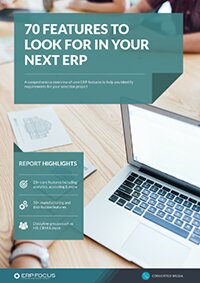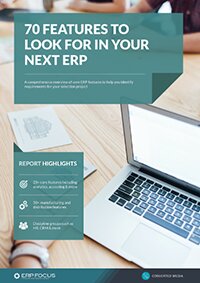A guide to ERP traceability for restricted goods
Most of today’s ERP systems provide us with the tools to trace the movements and whereabouts of our inventory with enough granularity to meet each of our needs. Manufacturers that use restricted goods to make their products use ERP to help keep us safe from potentially dangerous materials.
Government regulation of restricted goods
Governments use their customs and border protection service to control the movement of restricted goods. Goods that are considered restricted usually require a license permitting the ownership of transportation of that product. Agencies such as the Nuclear Regulatory Commission or Consumer Protection Services issue licenses and border protection service will ensure the license exists and the manufacturer is compliant with the terms of the license when a product crosses a border.
When a business imports a restricted item, they complete the necessary licenses and bring the item into inventory with a specific identification. Often this ID is called a lot number in ERP systems. For example, a business purchases a kilogram of radioactive dust for use in manufacturing a product. That radioactive material has a part number in the ERP system. This particular kilogram is also identified as lot number 1001. The business issues a gram at a time to production jobs and each of those usages records that it came from lot 1001. Each job produces 100 luminescent dial faces. When this kilogram is gone, the manufacturer will have 100,000 dial faces made and every one of those dials used material from this imported kilogram.
How your ERP can help with traceability requirements
Those 100,000 dial faces are identified by the 1,000 job numbers used over time. These identifying lot and job numbers are kept in your ERP and the manufacturer can show exactly which dial face they made from this imported kilogram. The manufacturer also will record the job number used to produce each dial face sold so can show what customer received a dial face from that lot. He can trace from the lot to the customer and from the customer back to the lot.
Another example might be a manufacturer that imports classic foreign cars. They modify those cars to have modern safety devices and modern pollution protections. Their customers want exotic transportation and they want to comply with today’s environmental rules. In this case, the automobile has its own VIN or vehicle identification number. The manufacturer’s processes are documented and they can show that the required pollution controls are in place when they deliver the car to the customer. The customer can then take the documentation to his local motor vehicle office to register his car and get a license plate for the car.
Lot numbers and serial numbers already are part of most ERP systems. How they are used depends on the needs of any business.
Free white paper

70 features to look for in your next ERP
A comprehensive guide to help you identify requirements for your ERP selection

Featured white papers
-

70 features to look for in your next ERP
A comprehensive guide to help you identify requirements for your ERP selection
Download
Related articles
-

How to use ERP project management tools to improve efficiency
Advice on using your ERP project management tools to their full potential
-

Secret KPI: Why Your ERP Implementation Team Matters More Than Software
Learn how Godlan ensures successful ERP implementation for manufacturers with proven strategies &...
-

ERP vs. HRMS: which should manage your payroll?
Compare the advantages and disadvantages of using HRMS or ERP to manage your payroll

